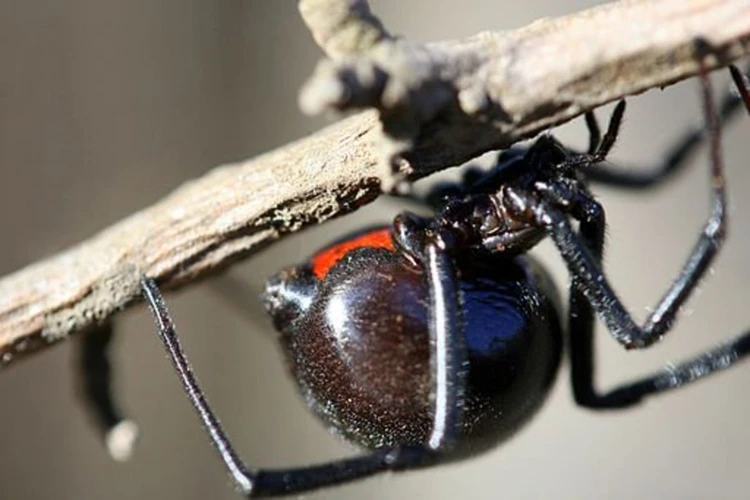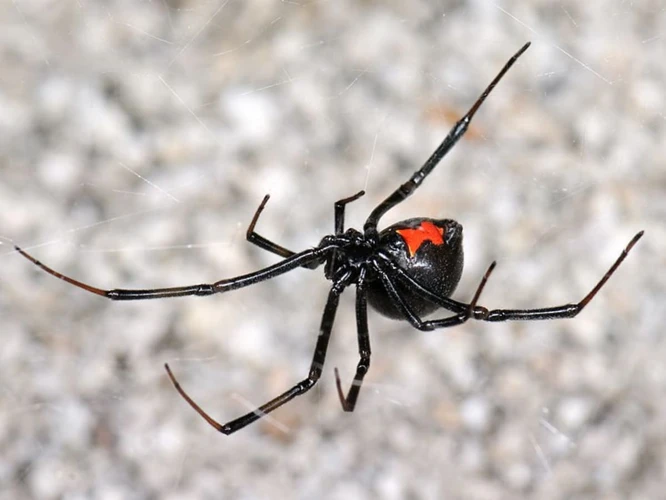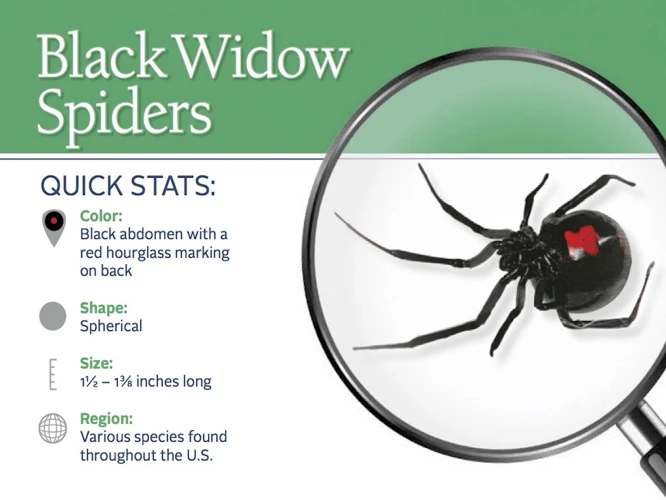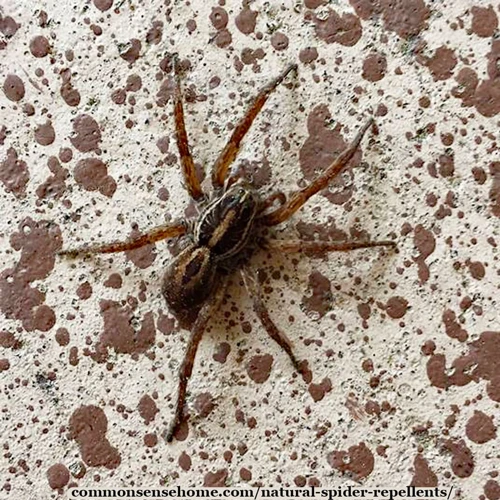Have you been spotting creepy black widow spiders in your home lately? Well, it’s not only annoying but also a health hazard. Getting bitten by these venomous spiders may result in painful medical conditions. The most effective way to prevent them from getting into your home is by sealing the gaps in pipe entry points. But where do you begin, and what materials do you need? This guide will take you through a step-by-step process and equip you with the necessary knowledge on how to seal those pipes effectively. Say goodbye to the eight-legged invaders!
Why You Need to Seal Pipes

Protect Your Home from Unwanted Spider Guests – Seal Pipes
Sealing pipes in your home might not seem like an important task, but in order to prevent black widow spiders from entering your home, it is crucial. Black widow spiders are highly venomous and their bites can cause serious harm. In this section, we will discuss the reasons why it is important to seal pipes and the dangers of black widow spider infestations. Understanding the importance of this task will help you protect your family from these dangerous spiders. To learn more about sealing cracks and gaps to prevent black widow spiders, check out our guide on sealing cracks.
Dangers of Black Widow Spiders
Black widow spiders are one of the most venomous spiders in the United States. Their bites can cause severe symptoms and can even be fatal, especially for children, elderly people, and those with weakened immune systems. These spiders are usually found in undisturbed areas like garages, basements, crawl spaces, and other dark places. They are attracted to cluttered spaces, so keeping your home clean and organized can help prevent their infestation.
Here are some of the dangers associated with black widow spiders:
- Severe symptoms: Black widow spider bites can cause a range of symptoms, including pain, cramping, chills, fever, sweating, and nausea. Some people may also experience muscle rigidity and difficulty breathing, which can be life-threatening.
- Difficult to spot: Black widow spiders are small and black, with a distinctive red hourglass-shaped marking on their abdomen. It can be difficult to spot them until it’s too late.
- Easily agitated: Black widow spiders can be easily agitated, and they will often bite when they feel threatened. This means that if you accidentally disturb them while working on pipes or other areas, you could be putting yourself at risk of getting bitten.
- Reproduction rate: Black widow spiders are known for their fast reproduction rate. One female spider can lay hundreds of eggs, and before you know it, your home can be infested with these dangerous spiders.
It’s crucial to take black widow spiders seriously and take steps to prevent their entry into your home. One of the best ways to do this is by sealing gaps in your pipes and other entry points through which they can crawl into your home. To learn more about how sealing cracks can be an effective way of preventing black widow spiders, you can visit this article.
How They Get into Your Home
Black widow spiders can enter your home through very small spaces. Here are some of the most common ways black widows can enter your home:
- Cracks in the foundation: Black widows can crawl through cracks in the foundation of your home. These cracks can be found both inside and outside of your home, so it is important to check both areas for potential entry points. For more information on how to prevent black widow spiders from entering through foundation cracks, visit /preventing-black-widow-spiders-foundation-cracks/.
- Unsealed air gaps: Air leaks around doors and windows can provide enough space for black widows to enter your home. Make sure to seal any gaps around doors and windows. For more information on how to air-seal your home to prevent black widow spiders, check out /air-sealing-home-black-widow-spiders/.
- Cracks in the attic: Black widows can also crawl through cracks in your attic. Make sure to inspect your attic for any potential entry points. For more information on how to seal attic cracks to block black widows, visit /sealing-attic-cracks-block-black-widows/.
- Unsealed gaps around windows and doors: Black widow spiders can crawl through small gaps around your windows and doors as well. Check for gaps in the weather-stripping, and make sure to seal any gaps you find. For more information on how to seal gaps around windows and doors to keep black widows out, visit /seal-gaps-windows-doors-keep-black-widows-out/.
- Cracks in the walls: Black widows can make their way through small cracks in the walls of your home. Be sure to inspect your walls for any potential entry points and seal them. For more information on how to seal cracks to prevent black widows, visit /seal-cracks-prevent-black-widows/.
By identifying and sealing these potential entry points, you can reduce the number of black widows that enter your home. For more information on the benefits of sealing cracks for black widow elimination, visit /benefits-of-sealing-cracks-black-widow-elimination/. It is important to regularly inspect your home for entry points and seal them, as staying vigilant is the key to keeping black widow spiders out of your home.
Materials You Will Need

When it comes to sealing gaps in pipe entry points, having the right materials and tools on hand is crucial. With the right supplies, you can effectively prevent black widow spiders from entering your home through these openings. To ensure that your sealing project goes smoothly, you’ll need to gather the following items: weather stripping tape, caulking gun, silicone sealant, putty knife, and a flashlight. With these supplies in hand, you’ll be one step closer to keeping your home spider-free.
Tools
To properly seal gaps in pipe entry points and prevent black widow spiders from entering, you’ll need the right tools for the job. Here are some essential tools that you’ll need:
- Flashlight: A bright flashlight is necessary to help you see any gaps or crevices where spiders could be hiding.
- Caulk gun: You’ll need a good caulking gun to apply the sealant to the gaps or entry points.
- Putty knife or scraper: Use a putty knife or a scraper to remove any debris or old caulk from around the pipe entry points.
- Gloves: Gloves are important to protect your hands from any chemicals or debris that you may encounter.
- Dust mask: If you’re working in a dusty or dirty area, use a dust mask to protect your lungs from any airborne particles.
- Utility knife: A utility knife may come in handy to help you trim any excess sealant around the pipe entry points.
Make sure you have all of these tools on hand before you begin the sealing process to avoid any unnecessary trips to the hardware store. Now that you have your tools ready, it’s time to gather the sealing materials.
Sealing Materials
When it comes to sealing gaps in pipe entry points to prevent black widow spiders from entering your home, there are a few materials you will need. Below is a table highlighting the most common sealing materials you can use:
| Material | Description |
|---|---|
| Expansion Foam | Uses a spray canister to expand foam and fill in gaps around pipes |
| Weather Stripping | Specially designed strips of material used to seal gaps around pipes and other areas |
| Silicone Caulk | A flexible, long-lasting sealant that can be used to seal gaps around pipes and other areas |
| Concrete Patch | Used to fill in larger gaps or holes in concrete areas around pipes |
It’s important to note that the choice of sealing material will depend on the specific location and size of the gap you are trying to fill. For example, weather stripping is most often used for smaller gaps, while expansion foam is better for filling larger gaps around pipes.
To learn more about identifying problem areas where black widow spiders can enter your home, check out our article on identifying black widow entry points. Additionally, using weather stripping to prevent black widow spiders from entering your home is an effective option, as discussed in our article on weather stripping to prevent black widows.
Identifying Problem Areas

Before sealing any pipes, it’s important to first identify problem areas where black widow spiders may be gaining access into your home. By pinpointing these entry points, you can effectively seal off any areas that present a risk of spider infestations. In this section, we’ll go over some methods for identifying potential entry points and signs of spider infestations to help you protect your home from these dangerous creatures. So, let’s dive right in and take a closer look!
Locations to Check
When attempting to prevent black widow spiders from entering your home, it is important to thoroughly inspect all potential entry points. Some common locations to check include:
- Outdoor Pipes: Inspect any outdoor pipes that lead into your home. This includes pipes for utilities such as water, gas, or electricity. Black widow spiders may use these pipes to gain entry to your home.
- Foundation Cracks: Look for cracks in your foundation or walls that may provide a gap large enough for spiders to enter.
- Vents: Check any vents that lead to your home, such as dryer vents or air conditioning vents. These may have gaps or holes that spiders can use to gain access.
- Doors and Windows: Be sure to check the seals around all doors and windows, which should be properly sealed to prevent pests from entering.
- Garage: Inspect the garage door seal and any gaps near the bottom of the door where spiders or other pests may enter.
It’s important to note that black widow spiders may also build their webs in outdoor areas near your home, such as bushes or woodpiles. It is recommended to keep these areas well-trimmed and free of clutter to reduce the likelihood of spiders making their way indoors. It is also important to check your home periodically to ensure that any cracks or gaps that may have developed over time are quickly sealed to prevent spiders from entering.
Signs of Spider Infestation
When sealing gaps in pipe entry points to prevent black widow spiders from entering your home, it’s important to identify problem areas and potential infestations. Here are some signs to look for:
| Signs of Spider Infestation | Description |
|---|---|
| Webs | One of the most obvious signs of a spider infestation is the presence of webs. Black widow spiders tend to build chaotic webs, so be on the lookout for tangled, messy webs in areas around pipes and other entry points. |
| Egg sacs | A female black widow spider can lay hundreds of eggs at a time, so if you see small, white or tan egg sacs in the area around your pipes, it’s a clear sign that spiders have been active in the area. |
| Live spiders | While it’s not always easy to spot black widow spiders, if you see any spiders that are black with a distinctive red hourglass shape on their abdomen, it’s a clear sign that you have an infestation to deal with. |
| Dead spiders | If you find dead black widow spiders around your home’s entry points, it’s a good indication that the infestation is well established. |
| Insect carcasses | Black widow spiders primarily eat insects, so if you spot dead insect carcasses around your pipes, it’s a sign that there may be spiders in the area. |
Keep an eye out for these signs of black widow spider infestations when inspecting your home’s pipes and entry points. If you spot any of these signs, take action immediately to address the problem and prevent further infestations.
Sealing Pipes
As you start to seal pipes, you’ll want to ensure you have all the materials and tools needed to properly close up any gaps or holes. With a bit of patience and attention to detail, you can effectively keep black widow spiders from entering your home and causing harm to you or your loved ones. So, let’s dive in and explore the step-by-step process for sealing gaps in pipe entry points to prevent these creepy crawly pests from getting inside.
Step-by-Step Guide
To seal gaps in pipe entry points and prevent black widow spiders from entering, follow these step-by-step instructions:
| Step | Action |
|---|---|
| Step 1: | Visually inspect all pipe entry points leading into your home. |
| Step 2: | Use a flashlight to locate any gaps or holes around the pipes. |
| Step 3: | Mark all problem areas where spiders could potentially enter. |
| Step 4: | Using a caulking gun, apply silicone caulking to the gaps in the pipes. |
| Step 5: | Smooth the caulking with a putty knife to create a seamless seal. |
| Step 6: | Allow the caulking to dry completely, following the manufacturer’s instructions. |
| Step 7: | Once the caulking is dry, inspect the sealed areas to ensure they are completely sealed. |
Additional Tips:
– When sealing, make sure to wear gloves to protect your hands from the caulking.
– Check the areas periodically to make sure there are no new gaps or holes.
– If you find any new entry points, seal them immediately.
– Consider calling a professional exterminator if the problem persists.
Precautions:
– Make sure to read and follow all instructions provided by the caulking manufacturer.
– Caulking should only be applied to clean and dry surfaces.
– Avoid contact with the caulking until it is completely dry.
– Always use caution when working with a caulking gun to avoid injury.
Additional Tips
When it comes to sealing gaps in pipe entry points, there are few additional tips that can make the process even more effective. Here are some tips that you should follow:
- Block all potential entry points: Black widow spiders usually prefer to get into homes through gaps or cracks in the walls, windows, or doors. It is important to check all the possible entry points and block them with caulk or sealant.
- Use insecticides: After sealing the entry points, spraying insecticides around the perimeter of your home can help to kill spiders that try to enter. Be sure to use insecticides that are safe for both humans and pets.
- Regular cleaning: Regular cleaning of your home can help to prevent black widow spiders from taking up residence. Be sure to vacuum and dust regularly, and dispose of any spider webs you come across. This will help to discourage spiders from staying in your home.
- Store firewood away from your home: Black widow spiders love to nest in firewood. If you store it near your home, you could be inviting them into your living space. Instead, keep firewood at a safe distance from your home.
- Call a professional: If you are dealing with a severe spider infestation, it is best to call a professional pest control company. They have the knowledge and experience to handle the problem safely and effectively, without causing harm to you or your family.
By following these additional tips, you can ensure that your home stays spider-free and that you and your family remain safe from their potentially dangerous bites.
Precautions
It is important to take the necessary precautions when dealing with black widow spiders. Here are some precautions you should take:
| Wear protective clothing: | When inspecting and sealing the entry points, make sure to wear long sleeves, pants, and gloves to avoid getting bitten by black widow spiders. |
| Use caution: | Black widow spiders are venomous, so use caution when handling anything that could potentially have a spider hiding inside. |
| Keep children and pets away: | During the inspection and sealing process, make sure children and pets are kept at a safe distance. This will help ensure their safety as well as prevent them from disrupting the process. |
| Dispose of materials properly: | When finished with the process, make sure to properly dispose of any sealing materials or debris to prevent future spider infestations. Do not leave materials lying around, especially outside where they could attract other pests. |
| Consider professional help: | If you have a severe black widow spider infestation or do not feel comfortable handling it yourself, consider hiring a professional exterminator to handle the job safely and effectively. |
By taking these necessary precautions, you can safely and effectively seal gaps in pipe entry points to prevent black widow spiders from entering your home.
Conclusion
In conclusion, sealing gaps in pipe entry points is a relatively simple process that can help prevent black widow spiders from entering your home. These venomous spiders can pose a serious health risk to you and your family, and it’s important to take steps to keep them out. By using the materials listed in this guide and following the step-by-step instructions for sealing pipes, you can dramatically reduce the likelihood of a spider infestation.
Don’t forget that prevention is key when it comes to dealing with black widow spiders. In addition to sealing up gaps around pipes, it’s important to keep your home clean and clutter-free, as spiders are attracted to dark, dusty areas. Regularly vacuuming and dusting your home can help keep these pests at bay.
If you do notice signs of a spider infestation, such as webs or egg sacs, it’s important to take action immediately. Call a professional pest control company to help you get rid of the spiders before the infestation gets worse.
Remember, sealing gaps in pipe entry points is just one step in preventing black widow spiders from entering your home. It’s important to take a holistic approach and be vigilant about keeping your home clean and spider-free. With these measures in place, you can rest easy knowing that you and your family are safe from these dangerous arachnids.
Frequently Asked Questions
What kind of spiders are black widows?
Black widows are a type of spiders that are known for their black bodies and red hourglass-shaped markings on their abdomens.
How dangerous are black widow spiders?
Black widow spiders are considered to be highly venomous. Their bites can cause severe muscle pain, cramps, as well as spasms of the abdominal muscles, which can last up to several days. In severe cases, they can even cause death.
What are some signs of a black widow infestation?
Some signs of a black widow infestation include spider webs in or around pipes, shed skins in corners or dark places, and of course, actual sightings of the spiders themselves.
Can black widows crawl through small gaps?
Yes, black widow spiders can crawl through small gaps as narrow as 1/16 inch in diameter. This is why it’s important to properly seal pipes to prevent them from entering.
What tools do I need for sealing pipes?
You’ll need a caulking gun, a putty knife, a wire brush, and some safety gloves to seal pipes properly and safely.
Can I use any type of sealant to seal gaps in pipes?
No, you’ll need to use a sealant that is specifically designed for the type of pipes you have in your home. For example, if you have PVC pipes, you’ll need to use a PVC-based sealant.
How often should I check my pipes for gaps?
You should aim to check your pipes for gaps at least once a year. However, if you’ve had issues with black widows in the past or live in an area where they are prevalent, you may want to check more often.
Can I get rid of black widow spiders myself?
While it is possible to get rid of black widow spiders yourself, it can be dangerous. If you do choose to do so, make sure to wear protective clothing and use caution when handling them.
What are some natural ways to repel black widow spiders?
There are some natural remedies you can use to repel black widow spiders, such as planting eucalyptus or lavender, spraying diluted peppermint oil around pipes, or setting up citrus peels near infested areas.
What should I do if I get bitten by a black widow spider?
If you get bitten by a black widow spider, seek medical attention immediately. If possible, try to collect the spider to help identify it and ensure that you receive the proper treatment.






